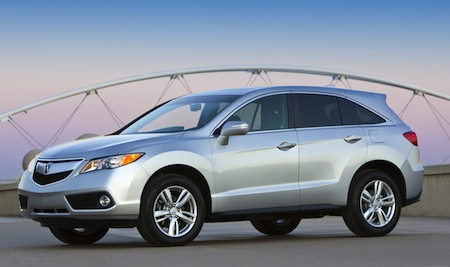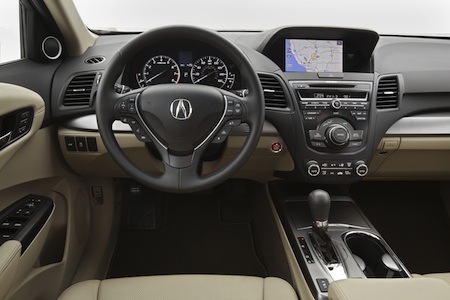2013 Acura RDX – Familiar Territory
- March 28, 2012
- Acura, New Model Introductions, On The Road: Driving Impressions, Uncategorized
- Posted by George Peterson
- Comments Off on 2013 Acura RDX – Familiar Territory
The previous generation Acura RDX was a moderately successful contender in the small crossover SUV (XSUV) wars. The RDX was a bit pricey – almost $33,000 – coming from a premium Japanese brand. It was heavy. It was powered by a very thirsty turbocharged 2.3L 4-cylinder engine. Competition had left the RDX behind and with its source vehicle – the Honda CR-V – being updated for 2012, 2013 is the obvious time to re-do the RDX.
Honda is expecting sales on the order of 30,000 units per year for the new RDX. This is not an unreasonable number for a product selling in one of the growth segments in the American car and light truck market. In fact, this sales volume seems a bit timid for a brand forecasting a 45% increase in sales for the 2012 calendar year.
For 2013, the RDX gets very, very evolutionary styling – its hard to tell the 2013 from the 2012 from the outside – a complete interior makeover and now is powered by a 3.5L V6 engine. The parrot’s beak grille has been toned down a bit although it is still there. The DLO – daylight opening – for the side glass has been reshaped a bit and now resembles the Lexus RX XSUV in profile.
Smart Interior Package: The 5-passenger interior is friendly and comfortable. The high tech features in the RDX are easy to understand and use with good attention to detail and ergonomics. The instrument panel flows away from the driver and front seat passenger giving the sense of more space. When looking at competition, the RDX interior dimensions are larger than the Cadillac SRX, Audi Q5, BMW X3 and Mercedes GLK. Its overall passenger volume is huge at 103.5 cubic feet compared with the BMW X3 at 90.1 cubic feet. Smart packaging. As an entrant in the smaller SUV category, RDX in no way feels small. For a small family or empty nesters, the RDX has all the space most would need.
Powertrain – V6 with Variable Cylinder Management – 6/4/3? Let’s think about the engine for a moment. With the first generation RDX, the vehicle was at a disadvantage because it had a 240HP turbo 4-cylinder that gave only 24mpg on the highway with front wheel drive and 22mpg with all wheel drive. The 2013 3.5L V6 gets 28mpg on the highway with front wheel drive and 27mpg with all wheel drive. The 273HP V6 also has 33 more horsepower than the old turbo four. The V6 is essentially the same six found in the Honda Accord, Odyssey, Pilot and other Acurae but with the added fillip of VCM – variable cylinder management to shut off cylinders depending on engine load. Driving the RDX, the VCM transitions were seamless and under all conditions the V6 feels better than the four. You don’t really know when you are driving with six, four or three cylinders.
Which brings us to a philosophical point. Acura is launching a “Entry Premium XSUV” with a V6 that was sorely missed in its predecessor, but the timing may be wrong. Could Acura have adopted an engine strategy to use a powerful 4-cylinder to achieve even better fuel economy than its “absolute top fuel economy in the class” at only 29mpg with front wheel drive? Simply, could Acura have done better.
Capstone – Where’s the Excitement? The 2013 RDX is a competent and evolutionary replacement for the Acura’s first generation effort at a smaller XSUV. RDX looks like what you would expect a contemporary Acura to look like. It doesn’t try too hard to have controversial styling. The parrot’s beak is more subtle. It is comfortable. It rides well. It handles well. It is easy to use and live with. So, overall, the RDX hits all the right buttons except the excitement button.



